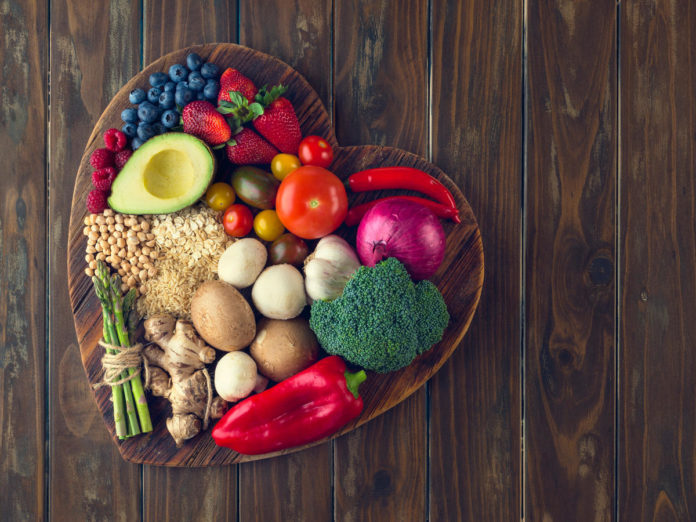“Food is the ingredient that binds us together, nourishing not only our bodies but also our souls, fostering connection, culture, and community.” Food is open to all and influenced by all. Back in lockdown times due to the COVID-19 pandemic, every individual became a chef, and their kitchen was no less than a 5-star hotel’s kitchen. Every individual influences food intentionally and hopes to make a world-famous dish. But not only humans but Nature too influences food in direct or indirect ways. One more such factor through which nature influences food is through Globalisation.
Globalisation refers to the integration and interconnection of various countries. Globalization does not only refer to the transfer of people. They carried goods, money, values, ideas and inventions, and even germs and diseases that could be hazardous. It’s also the integration of economies, cultures, societies, and technologies on a global scale. It involves the increasing flow of goods, services, capital, information, ideas, and people across national borders.
Globalization is driven by various factors, including advancements in communication and transportation technology, liberalization of trade and investment policies, and the spread of multinational corporations. Globalization has brought many benefits, such as increased economic growth, cultural exchange, and technological innovation. One needs to remember that globalization and geography move hand in hand.
One cannot know about the geographical impact on food and its distribution if globalization is not known. As we think about the visible signs of the global interconnectedness in our lives today, we need to understand the period through which this world in which we live has emerged.
Evolution Of Globalization
The History of globalization is a testament to all the events and incidents that have led to this drastic social and economic change. The Silk Network or Silk Route is one of the most vibrant examples of ancient globalization. The Silk Road was a network of ancient trade routes that connected the East and West, facilitating the exchange of goods, ideas, and cultures between civilizations. While named for the lucrative Chinese silk trade, the Silk Road was much more than a single route and extended over thousands of miles across Asia, Africa, and Europe.
The Silk Route also transported metals, spices, pottery, and textiles. Trade and cultural exchanges always went hand in hand. Early Christian missionaries certainly traveled this route to Asia, as did Muslim preachers a few centuries later than them. Much before all of them, Buddhism emerged from eastern India and spread in several directions through intersecting points on the silk routes at that time. Globalization has contributed to the increasing religious diversity in many countries. As societies become more interconnected, people are exposed to a variety of religious traditions and beliefs, leading to greater religious pluralism and tolerance in some contexts.
How Food Travels: Ancient History
Food is a fundamental aspect of human existence, serving not only as a source of nourishment but also as a cultural expression, a means of social interaction, and a reflection of geographical and historical contexts. But do you know, that food also traveled through the Silk Route? Yes, it did, and did it ever. Traders and travelers introduced new crops to the lands they traveled. Even ‘ready’ foodstuff in distant parts of the world might share common origins.
Take spaghetti and noodles. It is believed that noodles traveled west from China to become spaghetti. Or, perhaps Arab traders took pasta to fifth-century Sicily, an island now in Italy. Similar foods were also known in India and Japan, so the truth about their origins may never be known. Yet such guesswork suggests the possibilities of long-distance cultural contact even in the pre-modern world.
Many of our common foods such as potatoes, soya, groundnuts, maize, tomatoes, chilies, sweet potatoes, and so on were not known to our ancestors until about five centuries ago. These foods were only introduced in Europe and Asia after Christopher Columbus accidentally discovered the vast continent that would later become known as the Americas.
How food deals with life and death!
Sometimes the new crops that are introduced through globalization could make the difference between life and death. An incident that took place in Ireland in 1849 confirms the statement that food is the fundamental aspect of existence.
Potato was newly introduced in Ireland. All thanks to globalization, even the poorest could have their 3 time meals. The people began to eat better and live longer. But in the mid-1840s, a disease known as ‘Potato Blite’ destroyed the entire potato crop and people eventually started dying of starvation. Not 1 or 2 but several hundred thousand died of starvation and double the number emigrated in search of work.
What is Geography?
Geography concerning food refers to the study of how physical and human geographical factors influence the production, distribution, and consumption of food. It encompasses a broad range of elements, including climate, soil type, topography, transportation networks, cultural practices, and political boundaries, all of which shape food systems at local, regional, and global scales.
Geography also influences food distribution networks by determining transportation routes and access to markets. Natural features like mountains, rivers, and coastlines can either facilitate or hinder the movement of food products. Transportation infrastructure, such as roads, railways, and ports, is essential for transporting food from production areas to consumption centers.
Urbanization patterns and population distribution also play a role in shaping food distribution networks, with cities often serving as major hubs for food processing, distribution, and consumption.
How do Globalisation and Geography move hand in hand?
Globalization and geography are intricately intertwined, especially concerning food systems. Globalization, driven by advancements in transportation, communication, and trade, has facilitated the integration of food markets worldwide. However, the geographical context heavily influences how globalization manifests in food systems.
Geography dictates what crops can be grown where shaping agricultural practices and production patterns. It also determines transportation routes, infrastructure development, and access to markets, influencing the efficiency and cost of food distribution.
Cultural preferences and dietary habits, deeply rooted in geographical contexts, further shape consumption patterns and trade relationships. Thus, while globalization expands food choices and market opportunities, it operates within the constraints and opportunities defined by geography, highlighting the symbiotic relationship between globalization and geography in the realm of food.
Is food influenced?
The question that arises is whether globalization and/or geography have a crucial impact on food. While a lot of research claims that food is influenced, we also can conclude that what might be a famous dish, snack, or beverage in one area may not have originated there. For instance, Sushi, a popular Japanese dish consisting of vinegared rice, seafood, and vegetables, has gained widespread popularity worldwide, including in areas where it was not originally invented.
So one can conclude that, Yes it is influenced by a lot of climatic and distribution conditions. The globalization of food production and distribution is influenced by a myriad of geographic factors that shape the availability, accessibility, and diversity of food around the world. The conditions through which it can be affected are as follows:
1)Climate: In brief, Climate is the long-term pattern of weather in a particular area. The duration and amount of rainfall, the intensity of sunlight, etc are major contributors to the crop or food. Global variations in climate contribute to the diversity of agricultural production worldwide. For example, tropical regions are suitable for growing crops like bananas, coffee, and cocoa, while temperate regions are better suited for wheat, corn, and soybeans. This was in the context of the influential capabilities of the given factors on crops. A similar influence is seen in the distribution. If the climate is hot and humid, certain provisions should be made so that the package is not adversely affected.
2)Soil Fertility: In brief, Soil fertility is an index of measuring the content of organic matter and humus present in soil which contribute to the nutritional index of the crop grown. Soil fertility affects agricultural productivity and the types of crops that can be grown in a region. Fertile soils support the growth of a wide range of crops, while poor soils may require additional inputs such as fertilizers and irrigation to sustain agriculture. Soil fertility varies geographically, influencing the distribution of agricultural production globally. For Example, if soil A and soil B are of the same type, say Alluvial soil, but Soil A has higher fertility than Soil B, then even if identical origin crops are grown on both the soils, the crop grown on crop A will have better quality.
3) Soil Type: Soil type is a term used to identify what kind of soil is present in different areas. There are various kinds of soil namely, Alluvial Soil, Black Soil, Laterite Soil, Red and Yellow Soil, Arid Soil, Forest Soil, etc. Certainly, soil type does affect directly or indirectly the type or quality of the crop. This kind of geographical condition affects the crops in both positive and negative manner. Soil type profoundly impacts crop growth due to its composition and properties such as texture, drainage, and nutrient content.
Sandy soils, for instance, drain quickly, posing challenges for water retention but often supporting root vegetables like carrots. Clay soils, on the other hand, retain water well but may require additional amendments for better aeration, suitable for crops like wheat and corn. Loamy soils, a balance of sand, silt, and clay, are versatile and support a wide range of crops, making them ideal for diverse agricultural production in various geographic regions. Understanding soil types is crucial for maximizing crop yield and sustainability in different geographical contexts.
4)Land Availability and Land Use: Geographic factors influence land availability, land tenure systems, and land use patterns, which in turn affect agricultural productivity and food production. Urbanization, industrialization, and land degradation can reduce the amount of arable land available for farming, leading to competition for land resources and changes in land use practices, such as deforestation, land conversion, and urban sprawl. Mathematically, land availability is inversely proportional to urbanization and industrialization. The more urbanization is advanced, the less land is available to cultivate.
5)Topography:Topography refers to the physical features of a land surface, including its elevation, terrain, and the arrangement of natural and artificial features such as mountains, valleys, rivers, and buildings. It provides a detailed description of the shape and characteristics of the Earth’s surface at a particular location. Topographical features such as elevation, slope, and soil composition affect agricultural land use and productivity.
Flat, fertile plains are ideal for large-scale crop cultivation, while mountainous terrain may limit agricultural activities to terraced farming or livestock grazing. Soil quality and drainage also play a crucial role in determining which crops can be grown effectively in a particular area. Low-lying, flat areas with adequate water retention are often preferred for rice cultivation due to the need for flooded fields. Topography affects water management and irrigation efficiency in rice paddies.
6)Cultural and Dietary Preferences: Geographic factors shape cultural and dietary preferences, influencing the types of food consumed and the culinary traditions practiced in different regions. Cultural factors such as religion, ethnicity, tradition, and social norms influence food choices, cooking methods, and meal patterns, leading to diverse and distinctive food cultures around the world. A food can have originated there but due to some cultural restrictions, it is not popular in that particular area.
7)Availablity Of Markets:Geographic proximity to local, regional, and global markets influences food distribution channels, transportation costs, and market access for farmers and food producers. Remote or landlocked regions may face challenges in accessing markets and may rely on alternative transportation routes, storage facilities, and market linkages to sell their products.
For Example, If a crop say groundnut is not getting the desired amount of customers or markets, then it’s natural that farmers will rather shift to some other kind of crop. Similarly, in the context of distribution, only those items that are attracted to people will be imported or exported more. It is to keep financially beneficial
Some Other Ways How Geography Has Affected Food And Its Distribution:
From the natural features of the land to human-made infrastructure, geographical factors influence every aspect of the food system. Human settlement patterns influenced by geography affect food distribution networks. Urban areas with dense populations require efficient transportation and distribution systems to supply food to residents. Conversely, rural areas may rely more on local markets and direct farm-to-consumer sales. Political geography also plays a significant role in food distribution.
Borders, trade agreements, and government policies impact the flow of food across regions and countries. Tariffs, quotas, and subsidies can either facilitate or hinder the movement of food products, affecting prices and availability for consumers. Political geography also plays a significant role in food distribution. Borders, trade agreements, and government policies impact the flow of food across regions and countries. Tariffs, quotas, and subsidies can either facilitate or hinder the movement of food products, affecting prices and availability for consumers.
Conclusion
In conclusion, geography profoundly influences the production, distribution, and consumption of food. From determining what can be grown where to shaping transportation networks and trade patterns, geographical factors are integral to the functioning of the global food system.
Understanding these dynamics is crucial for addressing food security challenges and building resilient food systems capable of meeting the needs of a growing global population. Whether food originated in your country or not, it has immense importance. One should not waste food. And always remember “One cannot think well, love well, or sleep well if one has not dined well”
By: Devanshi Singh
Write and Win: Participate in Creative writing Contest & International Essay Contest and win fabulous prizes.
















